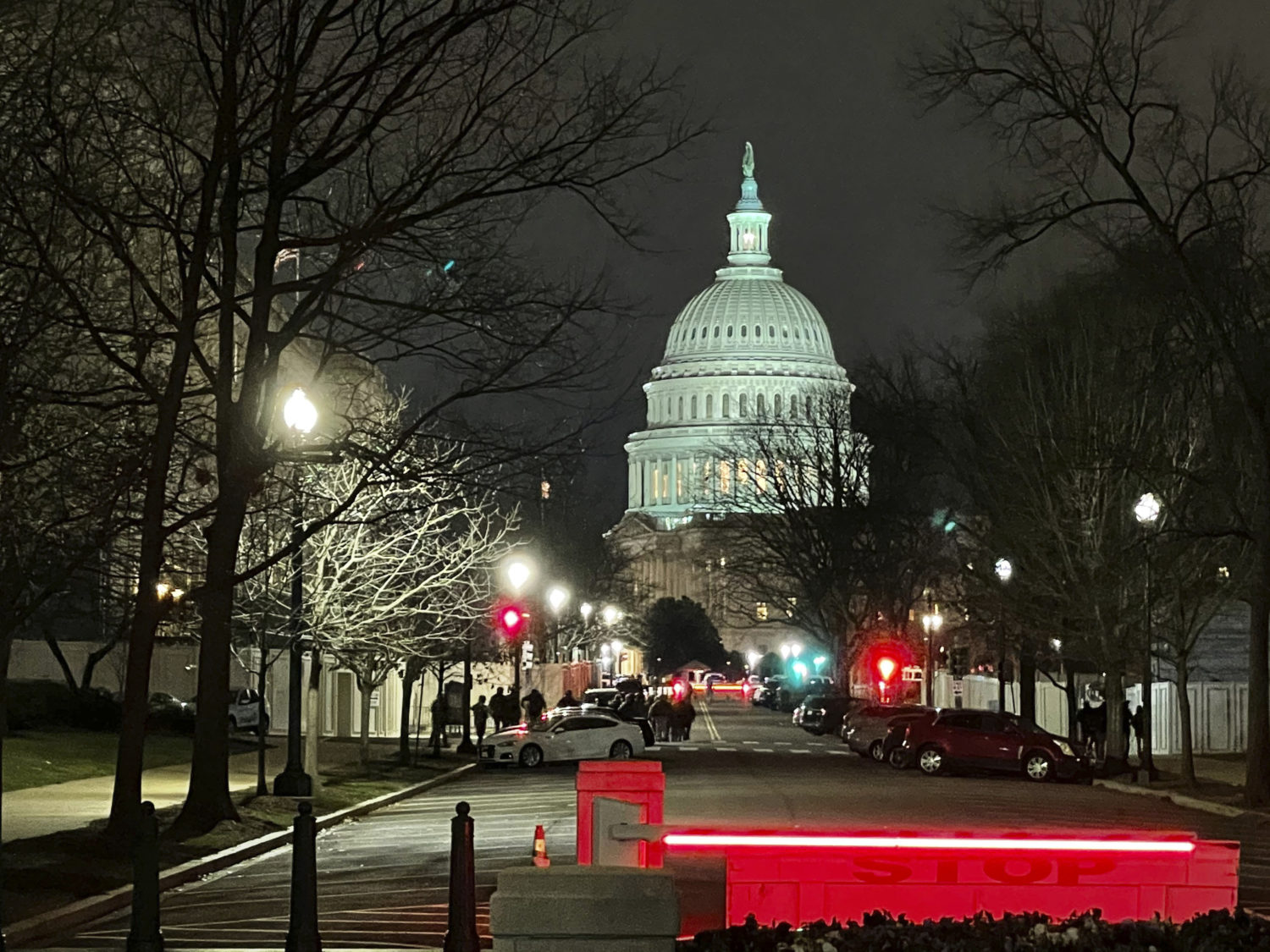This week we are confronting some hard questions. What will the next few days and weeks bring? Will there be continued unrest and potential violence in D.C., or in your own statehouse?
At the forefront of most journalism professors’ and advisers’ minds: How should I handle student journalists covering all this?
Many student journalists can be involved in this moment of our country’s history remotely — providing support in reporting and editing from the safety of their newsrooms or homes, as they’ve done so often over the past year.
But what about those students we all have who are going to feel compelled to be in the middle of it, whatever “it” turns out to be?
I hope this collection of resources helps you answer that question for yourself, your classroom and your newsroom. Try to carve out a few extra minutes this weekend to read up so you’re ready when confronted by students, or — God forbid — administrators. As always, I’d love to hear from you about specific questions or dilemmas you might have. I’m happy to help however I can.
What’s my role?
My colleague and journalism ethics guru Kelly McBride shared her thoughts about this issue with me this week. “I would want to tell journalism schools and journalism advisers this: Your job is to help student journalists cover the news. Their safety is part of that concern, but so is teaching them to weigh risks and act responsibly. A bureaucratic reaction that discourages or bans student journalists from documenting the story is equally as harmful as letting them proceed with reckless abandon.”
How can I prepare students?
“25 guidelines for journalists to safely cover unrest” from Poynter’s Al Tompkins has some incredibly thoughtful details and useful ideas that student journalists (and this former adviser!) might not have thought of. Among his great advice:
- Keep cameras rolling, especially when interacting with police or violent protesters.
- Document as much as you can, especially when tensions grow. Keep a “dud” memory card that you are not recording on in case somebody demands you hand over your video or images.
- Have a constantly updated escape route in mind. In the fog of smoke or tear gas, look for curbs and sidewalks that can guide you away from the scene. When tensions are building, decide whether you will be physically closer to the protesters or the authorities. It will determine what threats you will have to be aware of.
Make sure students who insist on covering potential unrest are familiar with the state capitol and grounds. Get them some maps and connect them with alums who cover or who have covered your statehouse.
HP Risk Management, which works with newsrooms and journalist associations, offers this tip sheet of questions journalists should ask themselves before going out on potentially dangerous assignments.
- Does the journalist have experience of covering protests and crowd events that can turn violent?
- Will the journalist be identifiable as a member of the media? (Media teams have previously been attacked when identified as journalists. Discretion is advised at all times.)
- Is the identity or ethnicity of the journalist likely to make them a target? (If individuals are likely to be targeted, consider their positioning and distance from the crowd.)
The Committee to Protect Journalists wants you to fill out its risk assessment form in advance to plan coverage, and offers many more tips in this post, like “Individuals should not be expected to work alone at crowded events and protests. Try to work with a colleague and set up a regular check-in procedure with your base, family, or friends. Working after dark is riskier and should be avoided if possible.”
You should also take a look at the Radio Television Digital News Association’s SAFE Journalist Training & Resources, which includes handouts on situational awareness and safety equipment for civil unrest.
And after this next news cycle, remember to take a moment to check in with students who might have witnessed or experienced trauma. This story by Kristen Hare (you’ll see it linked again below) has some great mental health advice for journalism leaders about halfway down.
What can we learn from D.C.?
There’s been a lot of great reporting lately about what journalists at the Capitol experienced on Jan. 6. Perhaps reading these will give you and your students a more realistic vision of what can go wrong in a mob situation.
Takeaway: There were at least nine physical assaults against journalists covering the insurrection at the Capitol and related rallies across the country on Wednesday, according to U.S. Press Freedom Tracker managing editor Kirstin McCudden. At least five journalists were arrested. At least four had their equipment damaged. Those numbers do not include incidents of harassment and intimidation.
11 Journalists on Covering the Capitol Siege: ‘This Could Get Ugly’ (New York Times)
Takeaway: April Ryan, TheGrio: “I said to myself: ‘Go back to Reporting 101. Call your sources. Reach out to people who are inside.’ And they talked.”
How to guard your physical and mental health while covering the inauguration (Poynter)
Takeaway: Sergio Olmos, Oregon Public Radio: Prepare ahead of time. Don’t drink a lot of alcohol the night before. Don’t take on too many other assignments and stress your mind or your body out. Be rested and ready so that you can be alert. “The risk is you walk into a situation where you’re not totally there mentally. That’s amateur hour s— that can get you really hurt.”
‘Is This Really Happening?’: The Siege of Congress, Seen From the Inside (Politico)
Takeaway: Burgess Everett, Politico co-congressional bureau chief: “We could hear people shaking the walls. At this point, people are on the Senate floor and all over the Capitol that shouldn’t be. We don’t even know this because we turned everything off because we’re trying to make it seem like nobody is in this room. We don’t know who the heck is in there. … I just heard banging and yelling, and police screaming and radio. I mean, it just sounded like bedlam.”
Takeaway: Leah Millis, senior photojournalist for Reuters: “I’ve photographed protests and violent scenes before that have evolved into complete chaos, but what made this so extraordinary was where it was. It was at the U.S. Capitol. To me, it was really important to show the context of where everybody was. I was constantly thinking about that in my head.” (One of her photos is the first image here.)
‘Senate Being Locked Down’: Inside a Harrowing Day at the Capitol (New York Times)
Takeaway: Erin Schaff, staff photographer: “Grabbing my press pass, they saw that my ID said The New York Times and became really angry. They threw me to the floor, trying to take my cameras. I started screaming for help as loudly as I could. No one came. People just watched. At this point, I thought I could be killed and no one would stop them. They ripped one of my cameras away from me, broke a lens on the other and ran away.”
Inside the Capitol: ‘It was the ugliest moment I have ever seen in America’ (National Geographic)
Takeaway: Louie Palu, photographer: Palu was back to being a conflict photographer. “When I cover these things, I’m always looking for a pillar or a wall or somewhere I can take cover,” he said. “I look at what people are saying and how they are behaving, so I can gauge the safety of the situation.”
And here are some videos you might want to watch, if you haven’t already seen them.
From Twitter: An AP photographer assaulted
Shomari Stone: Equipment destroyed
From The Washington Post: How pro-Trump insurrectionists broke into the U.S. Capitol
College headlines
- NBCUniversal launches NBCU Academy, a journalism training program across the U.S. (CNBC)
- Joe Biden’s Student Loan Plan: What’s Happening Now (Nerd Wallet)
Great journalism to share with your students
- ‘Our souls are dead’: how I survived a Chinese ‘re-education’ camp for Uighurs (text, The Guardian)
- A Black officer faced down a mostly White mob at the Capitol. Meet Eugene Goodman. (text, Washington Post)
- Why I lost it on live TV (text and video, CNN)
Poynter’s Internship Database
A reminder that Poynter’s internship database is up and running. New this week: Quinternships!
“The purpose behind the Quinternship Paid Internship Program is to offer students in the field of journalism, broadcasting, communication and related fields the opportunity to gain hands-on experience in broadcast television, radio, and digital information. Students who participate (Interns) will gain a wide variety of practical experience and will receive an hourly wage. The company strives to offer this opportunity to a diverse group of Interns.”
This week’s classroom lesson
Next week I’ll have information for you about our new educator’s subscription service, which will offer you classroom discussion questions and lesson plans centered around journalism ethics and the news business. Subscribers will get a new one each week. Here’s a sneak peek of what you can expect from this new service.
A Pennsylvania cheerleader was suspended for using vulgar language on Snapchat after she didn’t make the varsity squad. She fought back, and now her case will be heard by the Supreme Court. (Along with more nuanced discussion questions, you’ll get links to a video, more background information and links to further reading about the First Amendment and student rights.)
Questions for discussion:
- Do you think public schools should have the authority to dictate the language and behavior of students online?
- Are you familiar with your school’s policy on social media conduct for students?
- Is your speech on social media affected differently if you attend a public instead of private school? How?
One last thing
You and your students need some levity. How about this potato cake?







